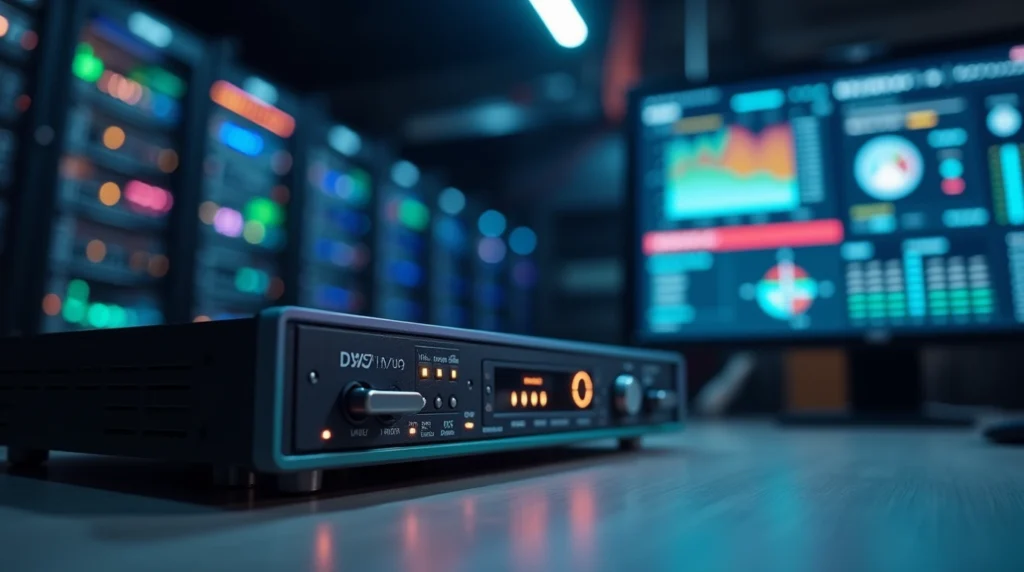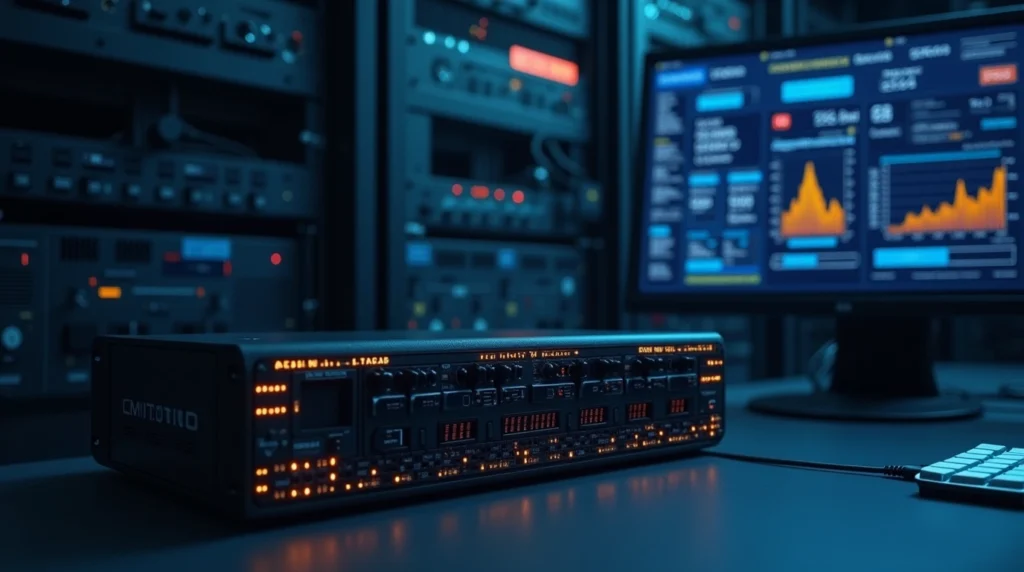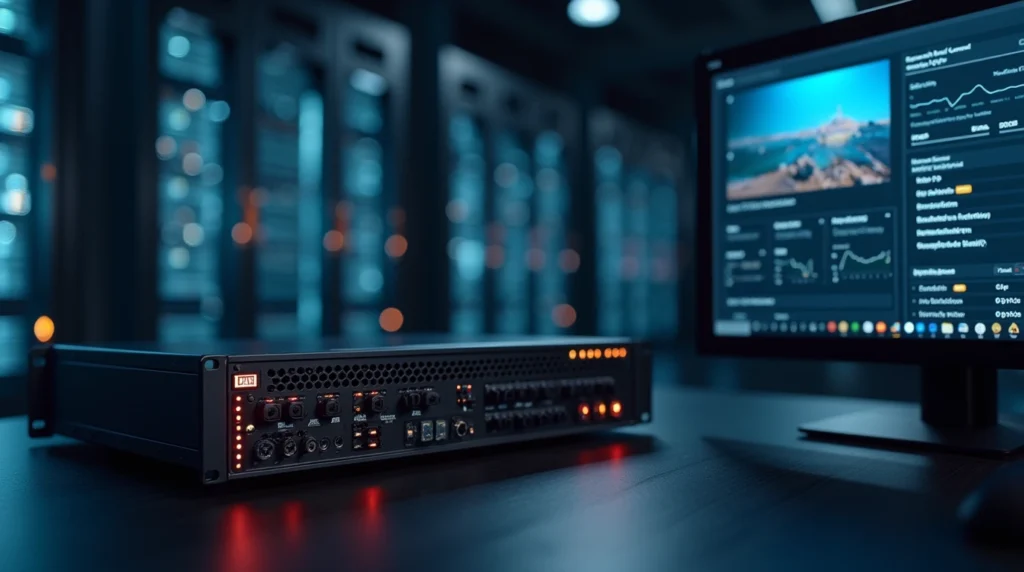Introduction
In the rapidly expanding IPTV industry, IPTV encoders play a critical role in delivering seamless, high-quality live streaming experiences. Whether you operate an IPTV service, broadcast station, or content delivery network, your ability to provide buffer-free, adaptive, and crisp video content begins with the right encoder.
As the demand for IPTV services grows across the United States and other Tier 1 markets, content providers and IPTV operators are under pressure to ensure low-latency streaming with minimal bandwidth consumption. At the heart of this challenge lies the IPTV encoder—a specialized hardware or software solution designed to convert raw video input into a digital format suitable for IPTV transmission.
In this comprehensive guide, we’ll explore everything you need to know about IPTV encoders—from their functions and types to how to select the best one for your infrastructure.
What Is an IPTV Encoder?
An IPTV encoder is a device or software application that compresses and converts video signals into IP-friendly digital streams. This process allows content to be transmitted efficiently over the internet and other IP networks.

These encoders typically support a variety of input sources such as HDMI, SDI, or analog video, and convert them into MPEG-2, H.264, or H.265 streams—formats commonly used for IPTV streaming.
Why IPTV Encoders Are Essential for Streaming Success
IPTV encoders serve several mission-critical functions:
- Real-Time Encoding: They convert video input in real time, ensuring minimal latency.
- Adaptive Bitrate Support: They enable multi-bitrate streaming, allowing viewers with different internet speeds to enjoy optimized experiences.
- Bandwidth Optimization: High-efficiency encoding formats such as H.265 save up to 50% bandwidth without sacrificing quality.
- Error Resilience: Professional IPTV encoders include error correction mechanisms, crucial for uninterrupted live streams.
Key Types of IPTV Encoders
1. Hardware IPTV Encoders
Hardware encoders are physical units built specifically for encoding video. They are ideal for professional broadcasters and large IPTV providers that need consistent, high-performance output.
Key Features:
- Durable and reliable
- Support for 24/7 operation
- Lower latency than software alternatives
- Real-time HD or 4K encoding
- Inputs: HDMI, SDI, Composite
2. Software IPTV Encoders
Software encoders run on general-purpose computers or servers. They are more flexible and cost-effective but may not match the real-time performance of hardware options.
Key Features:
- Easy to update and integrate
- Often used in cloud-based solutions
- Suitable for small to mid-sized IPTV platforms
- Examples: OBS Studio, FFmpeg, Wirecast
3. Cloud-Based IPTV Encoding Solutions
These are cloud-hosted encoding services offered as SaaS (Software as a Service). They are scalable, reducing the need for on-prem hardware investment.

Key Benefits:
- Pay-as-you-go model
- Auto-scaling for large events
- Integration with CDNs for global delivery
Technical Specifications to Look For
When choosing an IPTV encoder, pay attention to the following specs:
| Feature | Recommended Standard |
|---|---|
| Supported Codecs | H.264, H.265 (HEVC), MPEG-2 |
| Input Types | HDMI, SDI, AV, Component |
| Output Protocols | RTP, RTMP, HTTP, HLS, UDP, SRT |
| Resolution Support | 720p, 1080p, 4K UHD |
| Bitrate Control | CBR (Constant), VBR (Variable) |
| Multi-Stream Capability | Yes |
| Audio Support | AAC, MP3, AC3 |
How IPTV Encoders Work in the Streaming Pipeline
Here’s a simplified workflow of how IPTV encoders fit into the live streaming infrastructure:
- Video Capture: Raw input from a camera or broadcasting device.
- Encoding: Video is compressed and formatted by the encoder.
- Packaging: Encoded video is wrapped into a streaming protocol (e.g., HLS, MPEG-DASH).
- Distribution: Sent to a CDN or IPTV server.
- Playback: Delivered to end-user devices (smart TVs, mobile apps, IPTV boxes).
Best IPTV Encoder Brands in 2025
To ensure broadcast-grade reliability, many IPTV providers prefer these trusted brands:
- Haivision Makito X – Known for ultra-low latency and military-grade reliability.
- Teradek VidiU Go – Ideal for remote production and outdoor IPTV streaming.
- Magewell Ultra Encode – Popular in studios and digital signage networks.
- AJA HELO – Simple and robust for 24/7 streaming environments.
IPTV Encoder Use Cases
1. Live Sports Streaming
Sports broadcasters rely heavily on encoders that support high frame rates (60fps+) and 4K streaming.
2. Church and Faith-Based Streaming
Religious organizations often use affordable hardware or software encoders for Sunday services and online events.
3. Government IPTV Networks
Encoders used in public institutions need to be secure, stable, and compliant with data standards.
4. Corporate & Education Streaming
Corporate conferences, webinars, and e-learning platforms benefit from multi-stream encoders for simultaneous internal and external broadcasting.
Factors to Consider Before Buying an IPTV Encoder
When making a purchase decision, consider the following:
- Compatibility: Ensure input/output formats match your camera and network infrastructure.
- Scalability: Choose encoders that can scale with your service growth.
- Latency Requirements: Low latency is essential for real-time events.
- Budget: Hardware encoders can be expensive, while software options are more cost-effective.
- User Interface: Ease of setup and configuration matters, especially for non-technical operators.
Pricing Range of IPTV Encoders in 2025

| Encoder Type | Price Range |
|---|---|
| Entry-Level HW | $300 – $800 |
| Mid-Range HW | $800 – $2,000 |
| High-End HW | $2,000 – $8,000 |
| Software-Based | Free – $500 |
| Cloud-Based SaaS | Subscription-Based ($99+/mo) |
Benefits of Investing in a Professional IPTV Encoder
- Enhanced Streaming Quality: Cleaner video output at lower bitrates.
- Operational Stability: Reduces dropped frames and signal loss.
- Regulatory Compliance: Meets broadcast standards for commercial IPTV.
- Improved Viewer Retention: Viewers are more likely to stay with high-quality, low-latency streams.
Common Mistakes to Avoid
- Using Consumer Encoders for Commercial Use: Leads to buffering and crashes.
- Ignoring Bitrate Requirements: Results in poor quality or server overload.
- Overpaying for Features You Don’t Use: Match encoder specs to actual use cases.
- Skipping Redundancy Planning: Always have a backup encoder for mission-critical streams.
IPTV Encoder FAQs
What is the difference between an IPTV encoder and a transcoder?
An encoder compresses raw video into a digital stream, while a transcoder converts an already encoded stream into a different format or bitrate to match network conditions.
Can I use a free software encoder for commercial IPTV?
It’s possible, but not advisable for large-scale streaming. Free encoders like OBS lack the stability and real-time support needed for professional-grade IPTV.
Do IPTV encoders support 4K resolution?
Yes. Most modern hardware encoders offer 4K UHD encoding with HEVC compression, which is ideal for high-resolution streaming.
What protocols should an IPTV encoder support?
At a minimum: RTMP, HLS, SRT, and MPEG-TS over UDP. These cover a wide range of use cases including web, mobile, and set-top box streaming.
Are IPTV encoders plug-and-play?
Many hardware encoders are designed for plug-and-play use, but initial configuration of protocols, bitrate, and destination URLs is required.
How do IPTV encoders improve viewer experience?
They reduce latency, increase video clarity, and ensure smooth playback across different bandwidth environments.
Can a single IPTV encoder stream to multiple platforms?
Yes. Look for multi-stream or multi-protocol output support if you want to stream to YouTube, Facebook, and your IPTV server simultaneously.
Final Thoughts
Choosing the right IPTV encoder is one of the most important decisions an IPTV operator, live streamer, or broadcaster can make. Whether you’re launching a new IPTV platform or upgrading your infrastructure, investing in a high-performance, reliable encoder ensures long-term stability, viewer satisfaction, and operational efficiency.